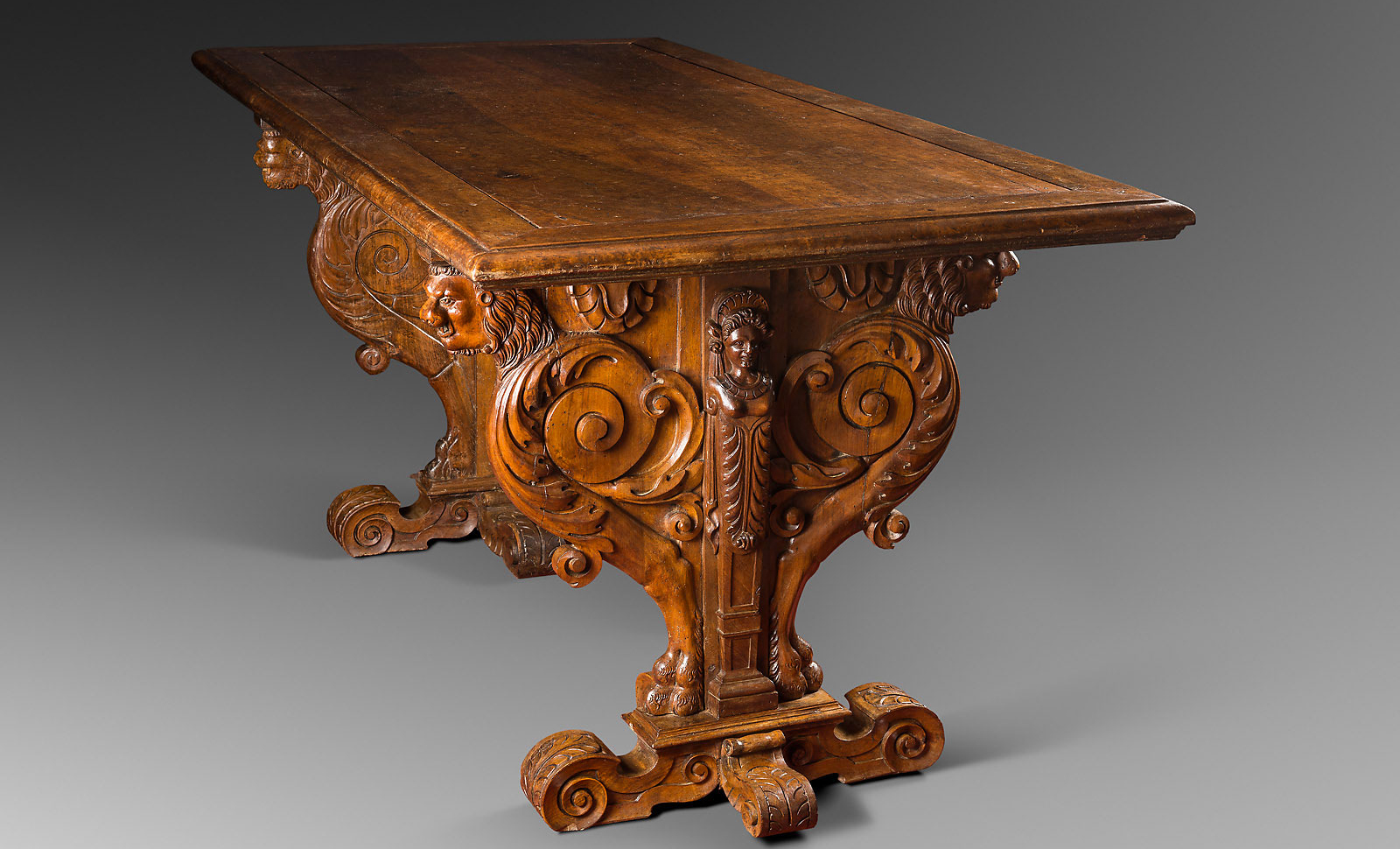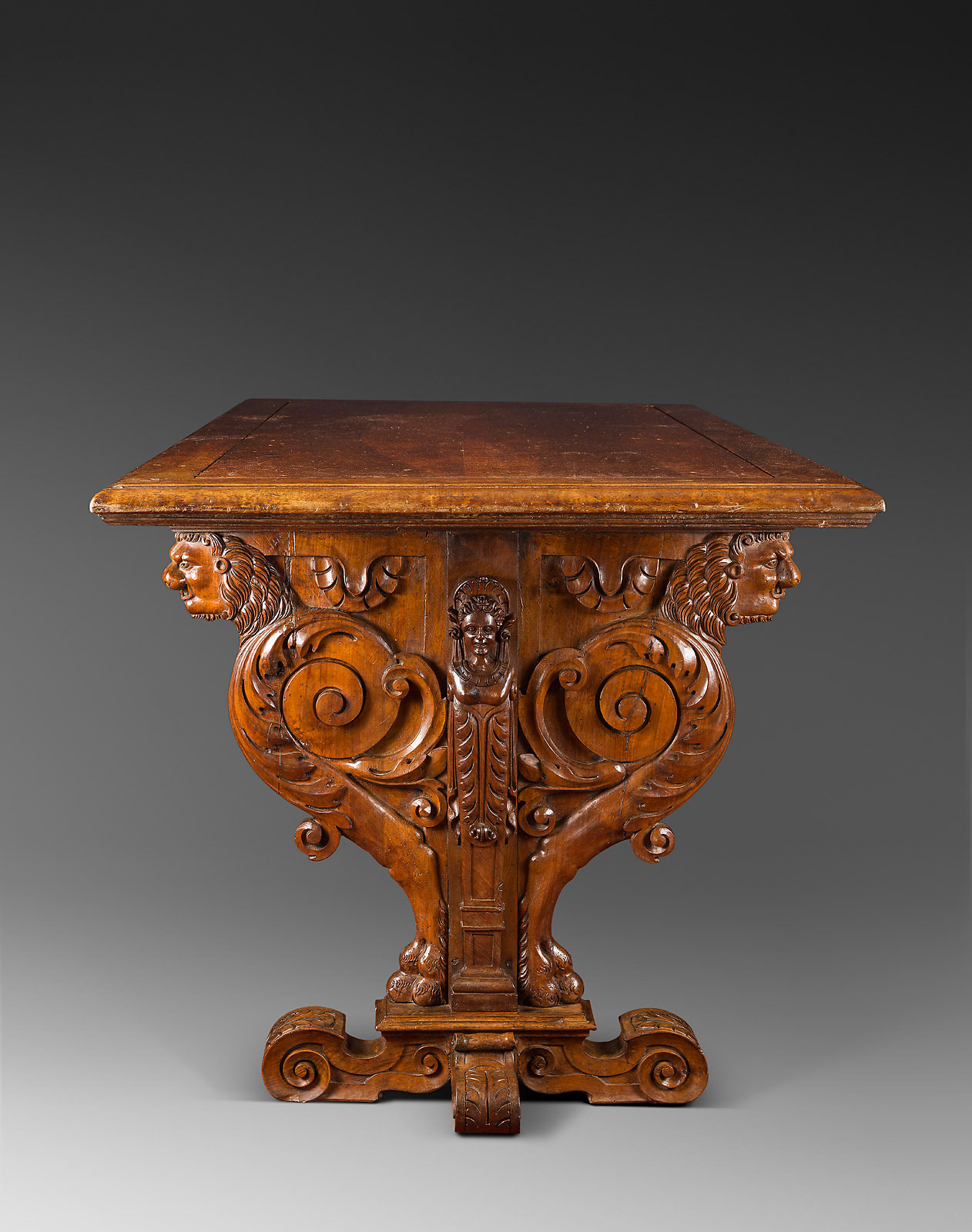Description
The French table transformed during the Renaissance. Inspired by Italy in its form and decorations, it was born in the crucible of the Fontainebleau School, where architects and ornamentalists, such as Jacques Androuet du Cerceau and Hugues Sambin, were trained. Both a ceremonial table and a piece of sculpture, it marks one of the peaks of the art of furniture in France (J. Thirion).
This table has a movable top and supports as did the models from the Middle Ages, and yet presents a decorative dimension characteristic of the Renaissance furniture, which the riche and most inventive type was the “fan-shaped” table, probably coming from Italy.
The central pilaster represents a term enriched by a foliage motif, including a laurel-crowned femal face on the first support and a male face on the second one. The high quality of this embossed work adds a touch of sophistication. Noteworthy, we can see on the backside of the fan-shaped supports, the same patterns as a lower relief, an extremely rare occurrence.
This Ceremonial Table can be moved, and can be used following the occasions , like a small dinner or a grand reception for exemple. We can admit that this table with a movable top and fan shaped movables supports is the single model known today.
Furthermore the richness of ornamentation, the carefulness and high quality of the sculpture denote that this table has its origin in Hugues Sambin School, Dijon, second half of 16th century.
Hugues Sambin (1520–1601) was a French sculptor born in Gray, trained as a cabinet-maker. As a designer of Mannerist ornament he published « L’Oeuvre de la diversité des termes dont on use… » (“The Diversity of Term figures”) Lyon, 1572. He inspired luxury furnishings, such as Dressoirs, Armoires and Cabinets. Its preface was signed “Hugues Sambin, Architecteur en la ville de Dijon“.
After the death of his father-in-law in 1565, whith whom he worked, he focuses mainly on the conception of pieces of furniture.
As an architect, he worked as a coordinator on the designs for temporary festive structures for Henri II and Charles IX (1564) royal entry in Dijon. About non ephemeral deliveries he built the Parlement of Besançon and the Palais de Justice in Dijon, erected to house the Parliament of Burgundy (1572). Archival references have recently revealed that he had spent six months in 1544 working at the Château de Fontainebleau, where the French Mannerist style rapidly evolved and perfected among the painters and stucco-workers and engravers of the School of Fontainebleau.
An exhibition at the Musée National de la Renaissance, Château d’Écouen, October 2001 – January 2002, and the catalogue, Hugues Sambin: Un Créateur au XVIe siècle (vers 1520-1601) (Alain Erlande-Brandenburg, curator) revived interests in the craftsman-designer, who was trained as a cabinet-maker.


